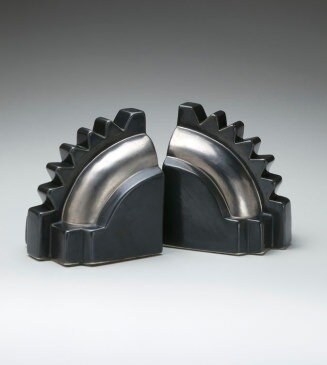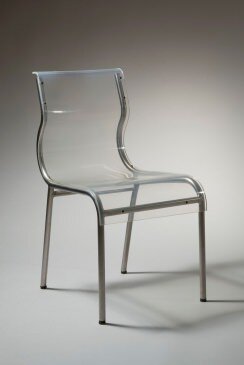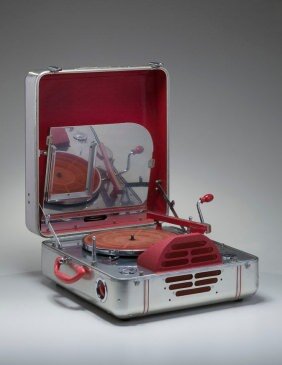The Yale University Art Gallery is pleased to announce that a gift of important works of American modern design has been promised to the Gallery by Yale alumnus John C. Waddell, B.A. 1959.
Consisting of more than 150 works made between 1925 and 1940, the Gallery’s John C. Waddell Collection ranges from unique, handwrought objects to examples of mass-production, and includes furniture, ceramics, glass, silver, metalwork, textiles, and original design drawings. The breadth and quality of the collection greatly enhances the Gallery’s holdings, adding numerous works by designers not already represented in the collection and creating new areas of depth. Additionally, the collection complements the Gallery’s renowned Mabel Brady Garvan Collection of early American decorative arts, making the Gallery the preeminent venue to view and study American decorative arts and design from the 17th century to the present.
Notable strengths of the John C. Waddell Collection include objects made in the mid-1920s that explore the initial impact of international modernist styles on American design, and objects made in the 1930s when industry partnered with designers to establish an innovative language for American manufacturing. Highlights include one of the earliest adaptations of modernist shapes by an American manufacturer, Square Modern (1925), a ceramic tea set designed by Reuben Haley for Fulper Pottery.
The collection also offers the only known surviving piece of an influential place-setting prototype commissioned by Eliel Saarinen from International Silver, originally included in the Metropolitan Museum of Art’s 1929 exhibition The Architect and the Industrial Arts. Also notable is the Kem Weber–designed pair of pewter candelabra (1928), executed by California metalsmith Porter Blanchard. These candelabra, thought to have been lost but recently rediscovered, evoke German and Austrian avant-garde design.
Other highlights pertain to American manufacturing, such as glassworks made by Steuben in the 1930s, including collaborations with noted industrial designer Walter Dorwin Teague; an aluminum, portable phonograph, by John Vassos for RCA (ca. 1935); and a dazzling molded Plexiglas side chair designed by Gilbert Rohde for Röhm and Haas chemical company’s display at the 1939 New York World’s Fair. Additionally, the inclusion of blueprints and design drawings provides scholars a better understanding of the creative process. Many of these works are featured in the Gallery’s new publication A Modern World: American Design from the Yale University Art Gallery, 1920-1950, copublished with Yale University Press (438 pp., 329 color ills., 19 b/w ills., $75).
John C. Waddell, B.A. 1959, states, “This gift recognizes Yale’s formidable strength in American decorative arts as well as the keen interest of the Gallery’s curators in modern American design, a field in which Yale’s collection is now unsurpassed.”
Jock Reynolds, the Henry J. Heinz II Director of the Yale University Art Gallery, declares, “The promise of this gift is a transformative moment for the Gallery’s collection of American decorative arts. We are deeply grateful.”
John C. Waddell
John C. Waddell, a graduate of Yale College and the Harvard Business School, is the retired former chairman and chief executive officer of Arrow Electronics, Inc., a global distributor of electronic components and computer products, of which he is currently vice chairman of the board. Collections previously formed by Waddell of both early modernist photographs and modern American design are at the Metropolitan Museum of Art, New York. Since he began collecting in the early 1970s, Waddell has been chiefly interested in the advent of modernism in a variety of media.


